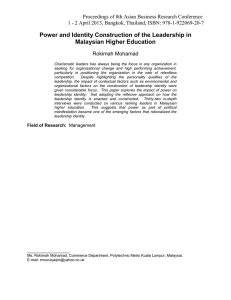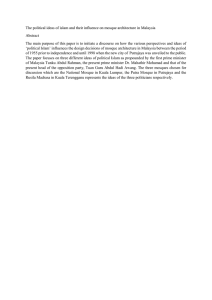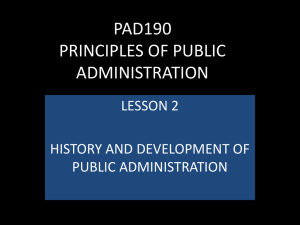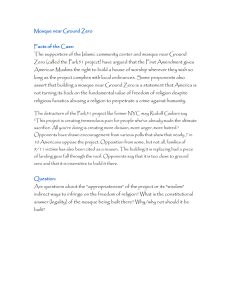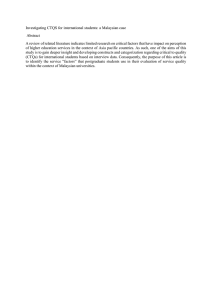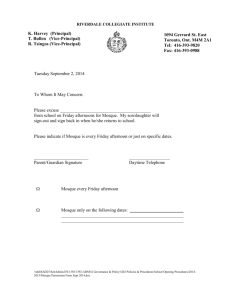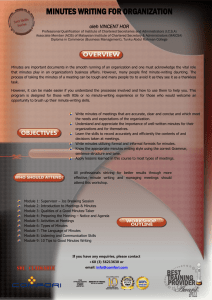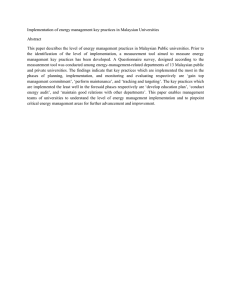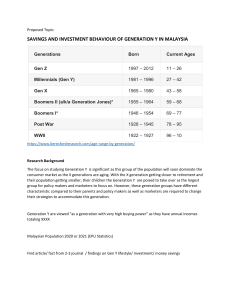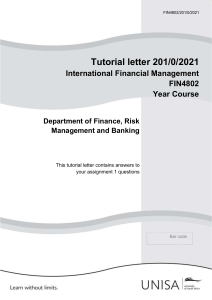Mosque architecture and political agenda in twentieth-century Malaysia Abstract:
advertisement
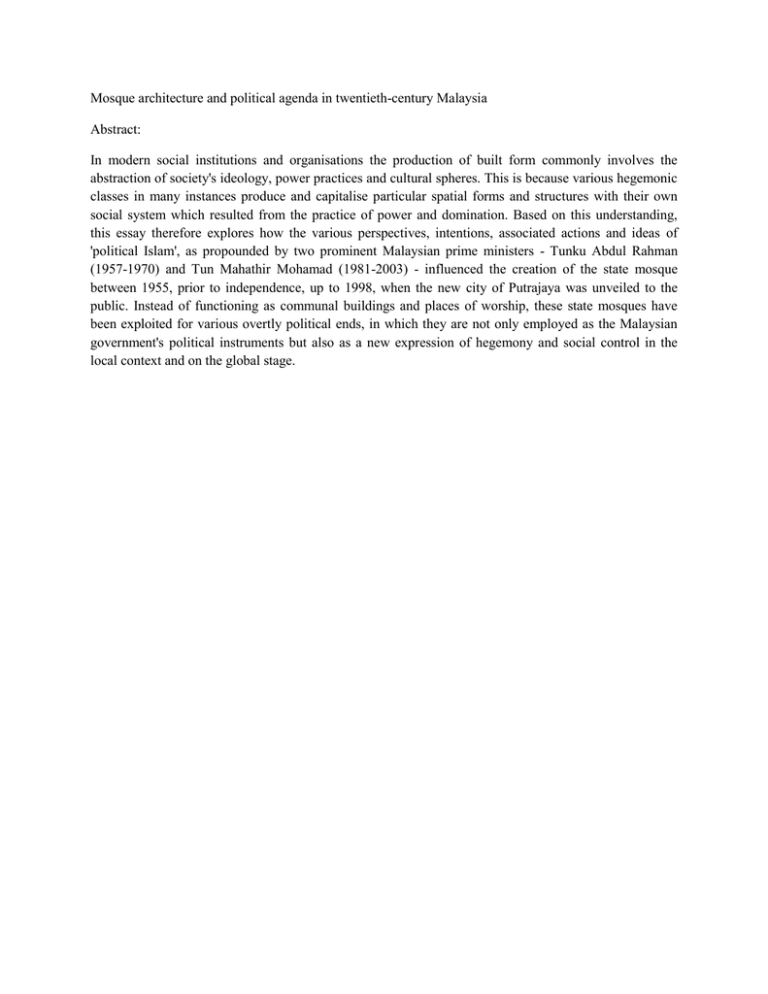
Mosque architecture and political agenda in twentieth-century Malaysia Abstract: In modern social institutions and organisations the production of built form commonly involves the abstraction of society's ideology, power practices and cultural spheres. This is because various hegemonic classes in many instances produce and capitalise particular spatial forms and structures with their own social system which resulted from the practice of power and domination. Based on this understanding, this essay therefore explores how the various perspectives, intentions, associated actions and ideas of 'political Islam', as propounded by two prominent Malaysian prime ministers - Tunku Abdul Rahman (1957-1970) and Tun Mahathir Mohamad (1981-2003) - influenced the creation of the state mosque between 1955, prior to independence, up to 1998, when the new city of Putrajaya was unveiled to the public. Instead of functioning as communal buildings and places of worship, these state mosques have been exploited for various overtly political ends, in which they are not only employed as the Malaysian government's political instruments but also as a new expression of hegemony and social control in the local context and on the global stage.
